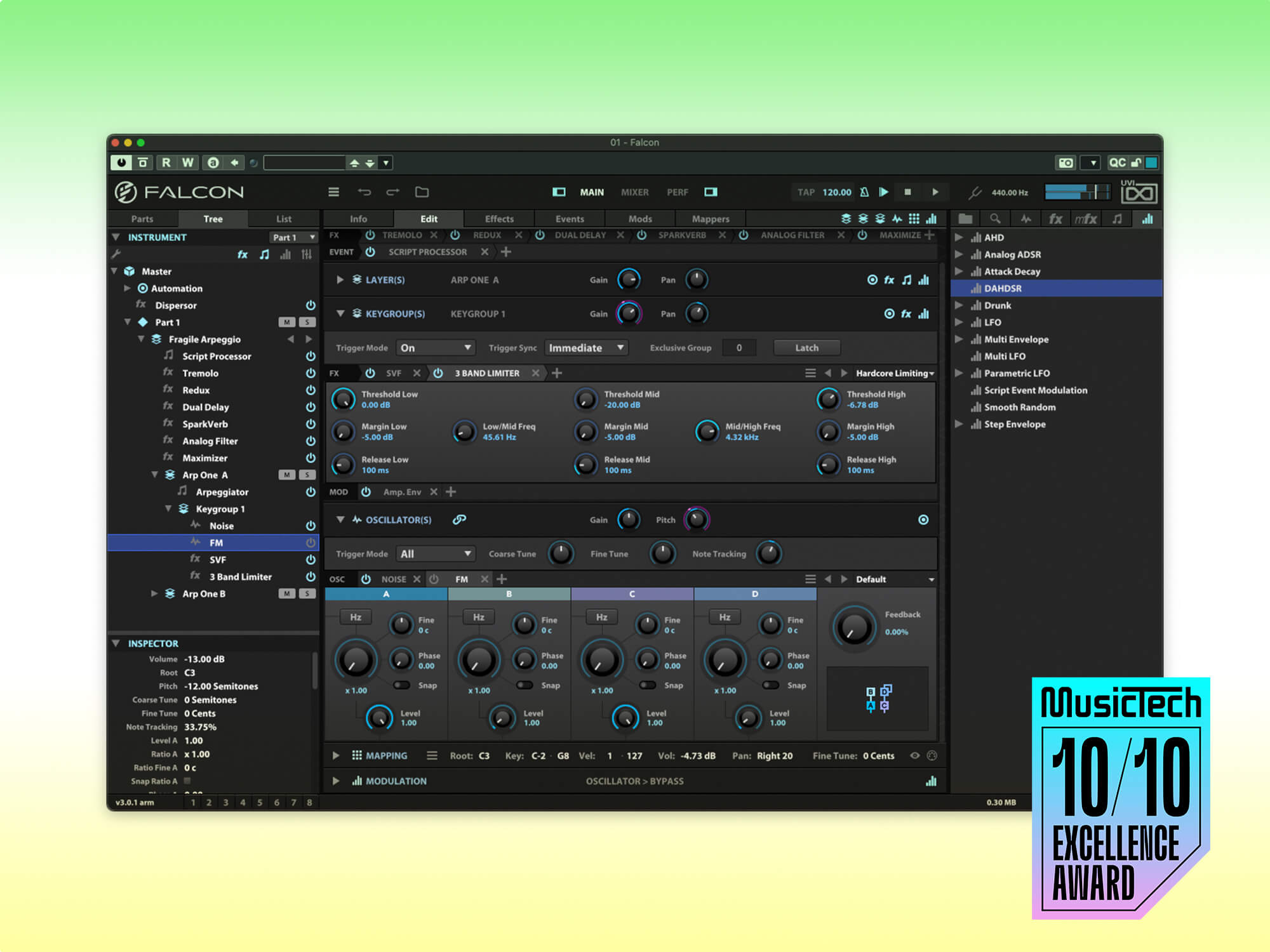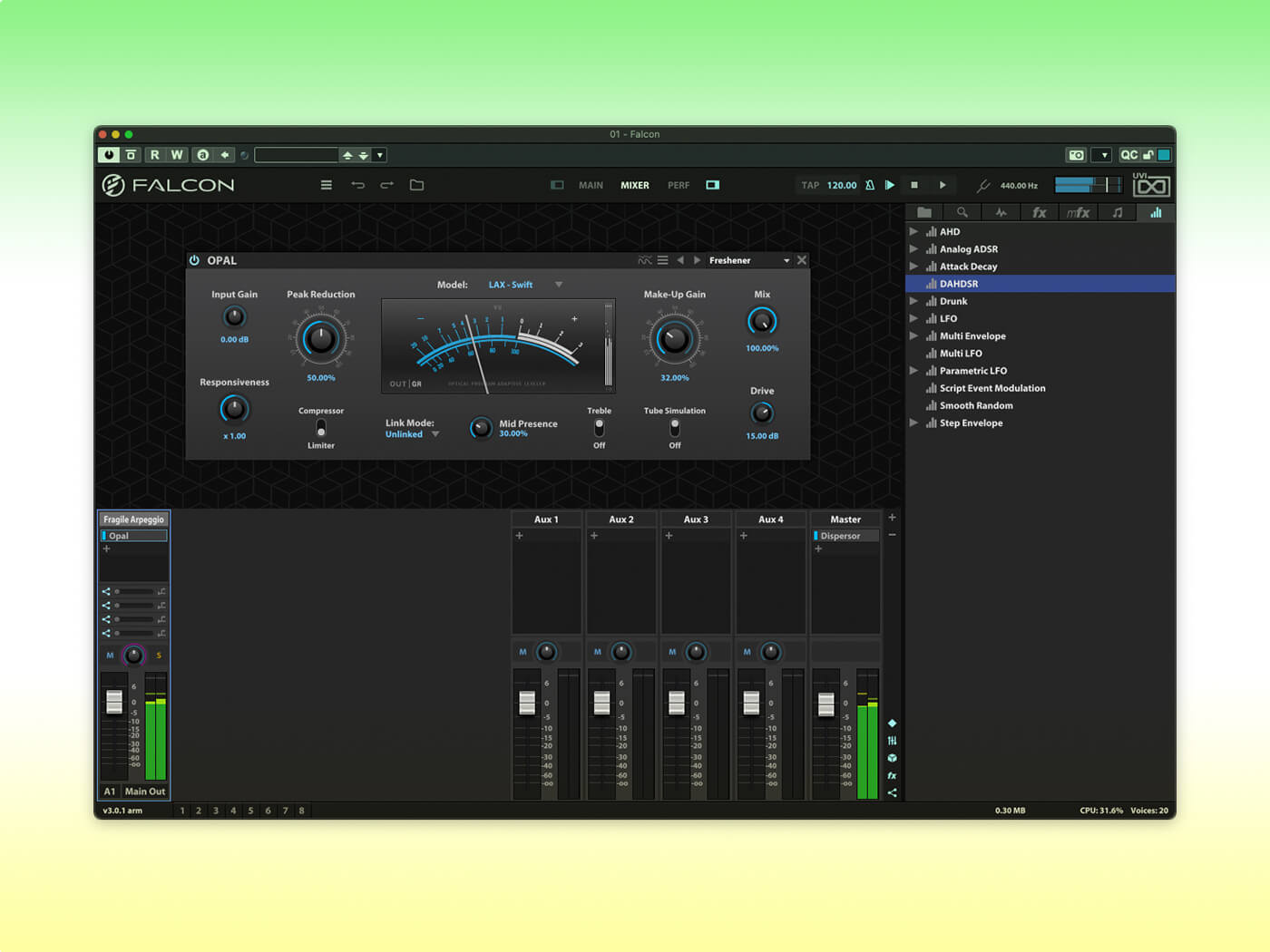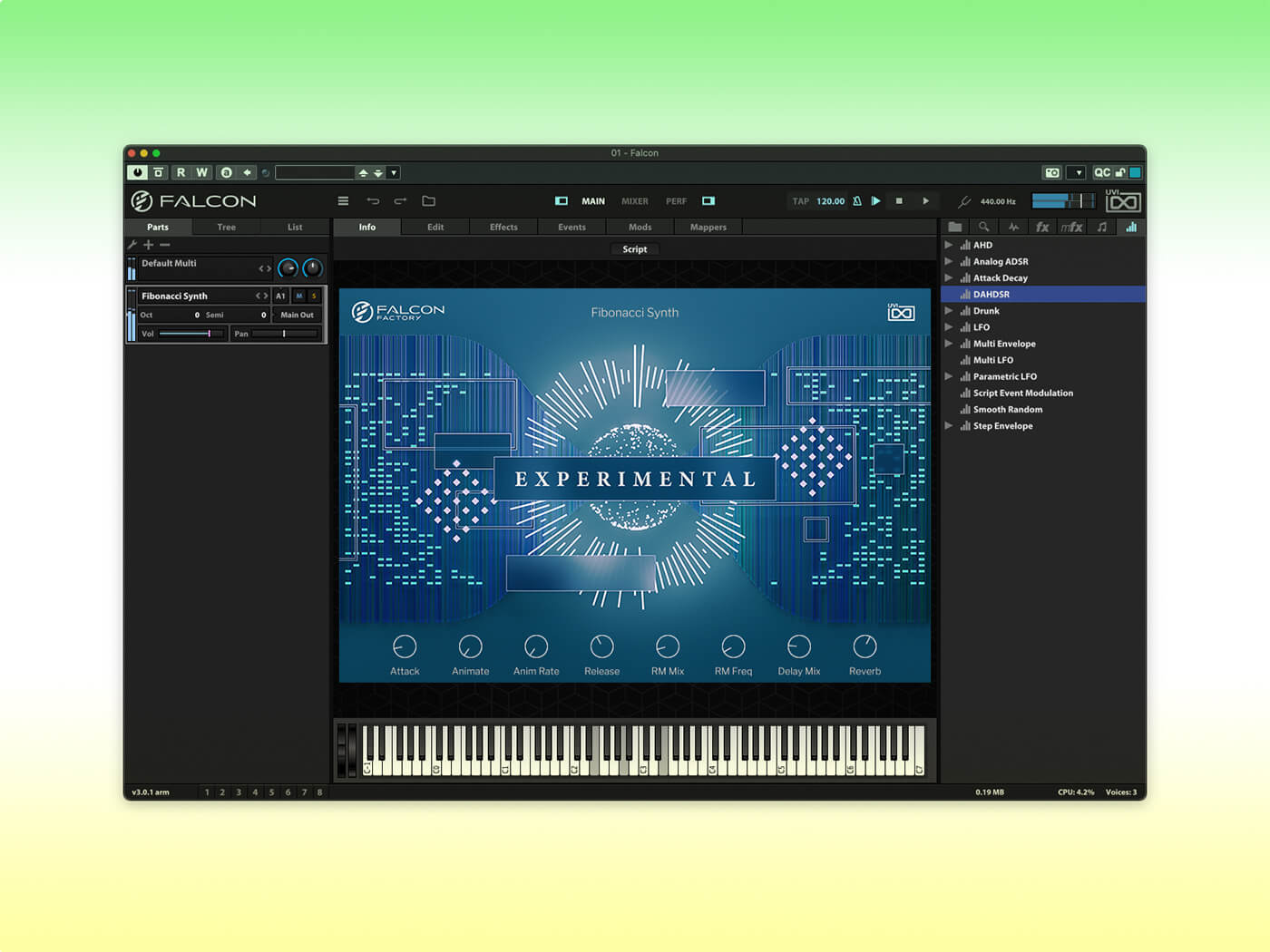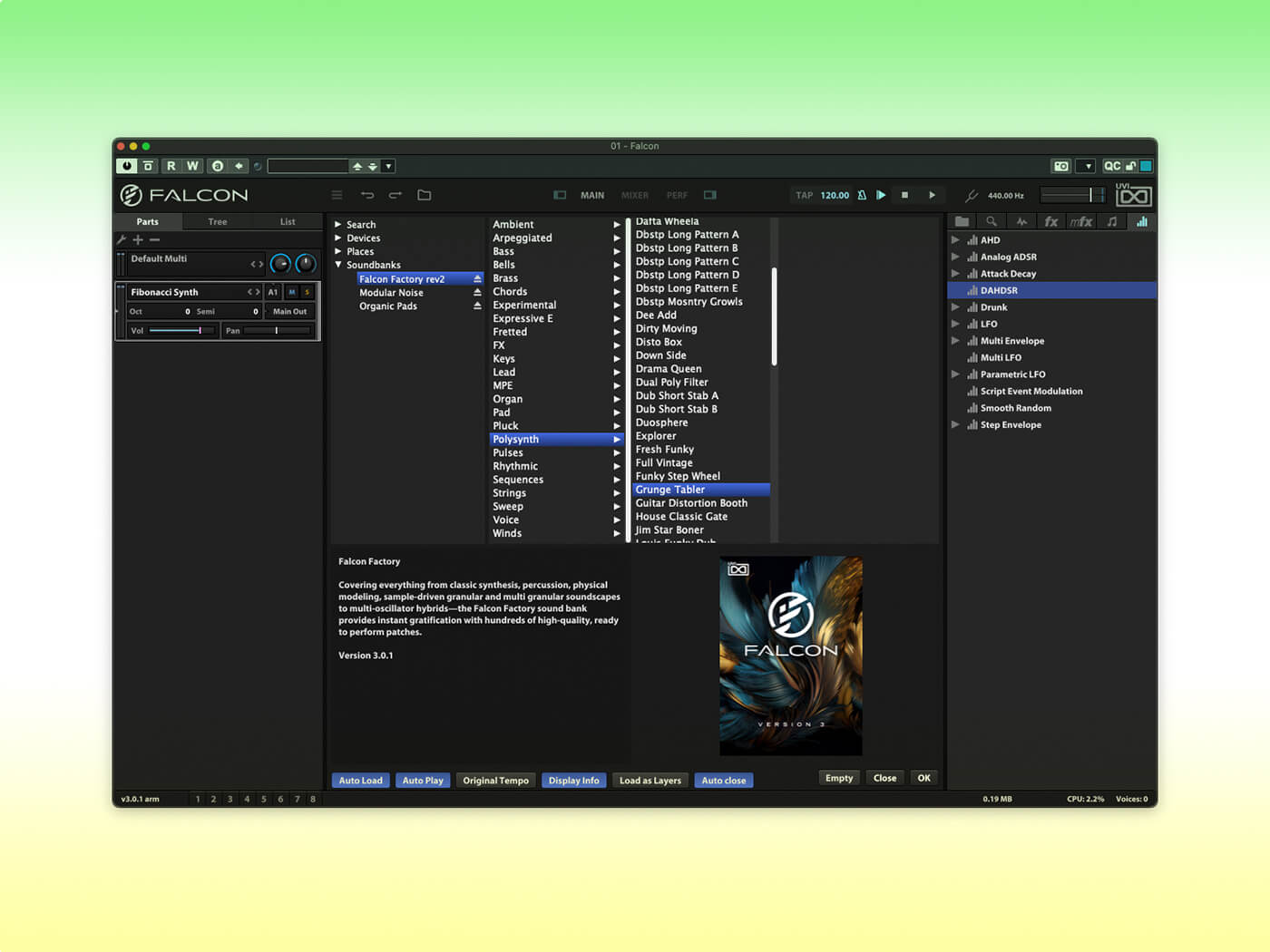UVI Falcon 3 sends your sound design soaring to new heights
You would think an instrument that can turn its hand to all forms of synthesis would be called Chameleon, but UVI chose to call this ludicrously flexible instrument Falcon instead

UVI Falcon 3
Review Overview
Our rating
10
Our verdict
⊕ Effects, processors and modifiers can be applied at any level within a patch or multi
⊕ New oscillators and processors increase the sound design power
⊕ Fascinating new sequencer/arpeggiators, perfect for generative music
⊕ Improved workflow
⊕ Excellent user interface helps to keep things manageable
⊖ Colour-coding could help to make the interface easier to navigate and read
€349 (add-on sound banks €39 each), uvi.net
Synths are normally categorised based on their core synthesis technology: subtractive, FM, wavetable, and so on. This helps us manage our expectations of an instrument. But, in the modern world of powerful computers and software synthesisers, these distinctions become blurred – or break down completely. UVI Falcon is the epitome of this.
Falcon is a soft synth that supports (practically) all synthesis techniques, and with an architecture so open-ended it defies all categorisation. The third edition of this uber-synth is now available, so let’s take a look at the new features, and discover what makes Falcon so astonishingly powerful.
Hierarchical structure
Falcon builds its sounds from a hierarchy of nested objects and layers. Oscillators lie at the very bottom of this hierarchy, with one or more of them being assigned to a Keygroup that defines key and velocity ranges.
Keygroups are assembled into Layers, a collection of one-or-more Layers constitutes a patch, and patches can be combined in the multi-timbral Master, which sits at the very top of the hierarchy.
What makes this exceptionally open architecture even more compelling is that various kinds of modifiers can be added at every level of the structure. So you can, for example: apply an envelope to an oscillator, Keygroup or Layer, or to the entire patch; add different effects at different points in the structure; include multiple complementary sequences, each driving a different patch, Layer, Keygroup or oscillator. You can even import or write (LUA language) scripts to customise functionality and behaviours.
The only limitations are your imagination and the processing power of your computer.

How complicated is the UVI Falcon 3?
The one downside of Falcon’s astonishing depth of flexibility is that it is inherently complicated. You can ignore this complexity and just work from the synth’s Info view, which provides a small number of patch-specific, macro-style controls. But if you want to edit the deeper details, or create your own patches, then you will have to deal with the instrument’s complexities.
Thankfully, UVI has done an exceptional job of taming such complexities and organising them into a sensible and logical interface.
A main view area shows control panels for all of the elements loaded into the synth. Sidebars can be opened to see an overview of a patch’s (or multi’s) structure, and to access palettes of oscillators and modifiers that can be dragged-and-dropped onto a patch. There’s also a new Workspaces feature that allows up to eight different views to be stored for later recall.
Creating patches from scratch has been made easier thanks to the new templates feature, which provides 21 starting points for different types of synth. These save a lot of time and help you avoid getting bogged-down before you even start a sound design session.
Despite the templates and UVI’s excellent user interface work, it is easy to become lost in Falcon’s limitless depths. Employing a bit more colour-coding around the place would help here because, attractive though the instrument’s muted shades-of-grey styling might be, the different sections of the main view area don’t stand out from each other as well as they could.

New oscillators
This third release of Falcon includes a bunch of new goodies that add even more power and versatility to the synth. Starting with oscillators, there’s VOSIM, Bowed String and Harmonic Resonators. The first of these emulates vintage choir synths like the Logan Vocalist and Korg Polyphonic Ensemble. It offers a Formant mode, where the formant frequency and resonance can be dialled-in, and a Phonem mode, where you can select the phonetic sound that will be synthesised.
Bowed String combines the harmonic tones of a violin, viola or cello with inharmonic bowing sounds. The oscillator allows control over string tension and friction, bowing position, and more, and comes with a collection of different bowing articulations. Despite the name, this doesn’t create instantly realistic string sounds on its own, but rather provides a sound layer that, when combined with other oscillators and layers, can add dramatic and realistic flavours to string patches.
Harmonic Resonators is a peculiar beast that uses a combination of transient, texture and noise samples to excite a set of six tuneable and inter-coupled resonators. The resulting sound is hard to describe, but tends to be airy, short-lived and packed with interesting harmonics, making it ideal for special effects, and as a component of a larger sound.
Effects and processors
This oscillator has a new effect-processing counterpart, the Harmonic Resonator processor. This features a similar suite of six tuneable resonators, and can be used to squeeze all sorts of textures and harmonics out of a source sound, although it is an odd beast that gives unpredictable results. What is predictable, though, is the new Ladder Filter, which gives a fabulous recreation of Moog’s famed design.
On top of these synth-style processors there’s also Opal, a model of vintage optical compressors such as the Teletronix LA-2A, and Dispersor, a transient shaper that can be focussed on a specific frequency. Frankly, we can’t really work out what Dispersor is doing despite it only having four controls, but it certainly introduces interesting colourations to the sound.
The updates that we found most fun to play with were the three new sequencer/arpeggiator event processors – a dream for generative composers. Motion Grid manages up to four independent note triggers that move around on an 8×8 grid; Snowflakes uses the concept of falling flakes to convert sustained notes into rhythmic, dancing staccato notes; and the fascinating Node Arp uses a 16×16 matrix and on/off logic to create unique sequences of notes and chords.

Unfathomable
The limitless sound design options offered by Falcon result in a formidable collection of factory presets, packed to the gunnels with classic synth staples and inspirational, ear-popping sounds that few other synths could create.
Many add-on sound banks are available too, including two new ones – Modular Noise and Organic Pads – that take advantage of Falcon 3’s new features. So you can easily harness the phenomenal power of Falcon without having to delve into its TARDIS-like innards.
The asking price is quite high, and it does take time and effort to become fully comfortable working with Falcon 3’s ludicrously open-ended capabilities. But with so much power, so much versatility, and so few limitations, it is an expense and effort that pays off in spades.

Key features
- Standalone, or plugin (AAX, AU, VST and VST3)
- Large factory sound bank included; additional sound banks available
- Built on reliable and efficient UVI Engine XT
- Hierarchical structure starts with Multi and drills down to individual oscillators
- 13 synth-style oscillator types
- 7 sample-based oscillator types
- Dozens of synth-style processors and effects
- Multi mixer with insert and send effects
- Wide range of modulation sources; easy routing to destinations
- Many event processors and scripts included
- MPE (MIDI Polyphonic Expression) support for use with advanced controllers